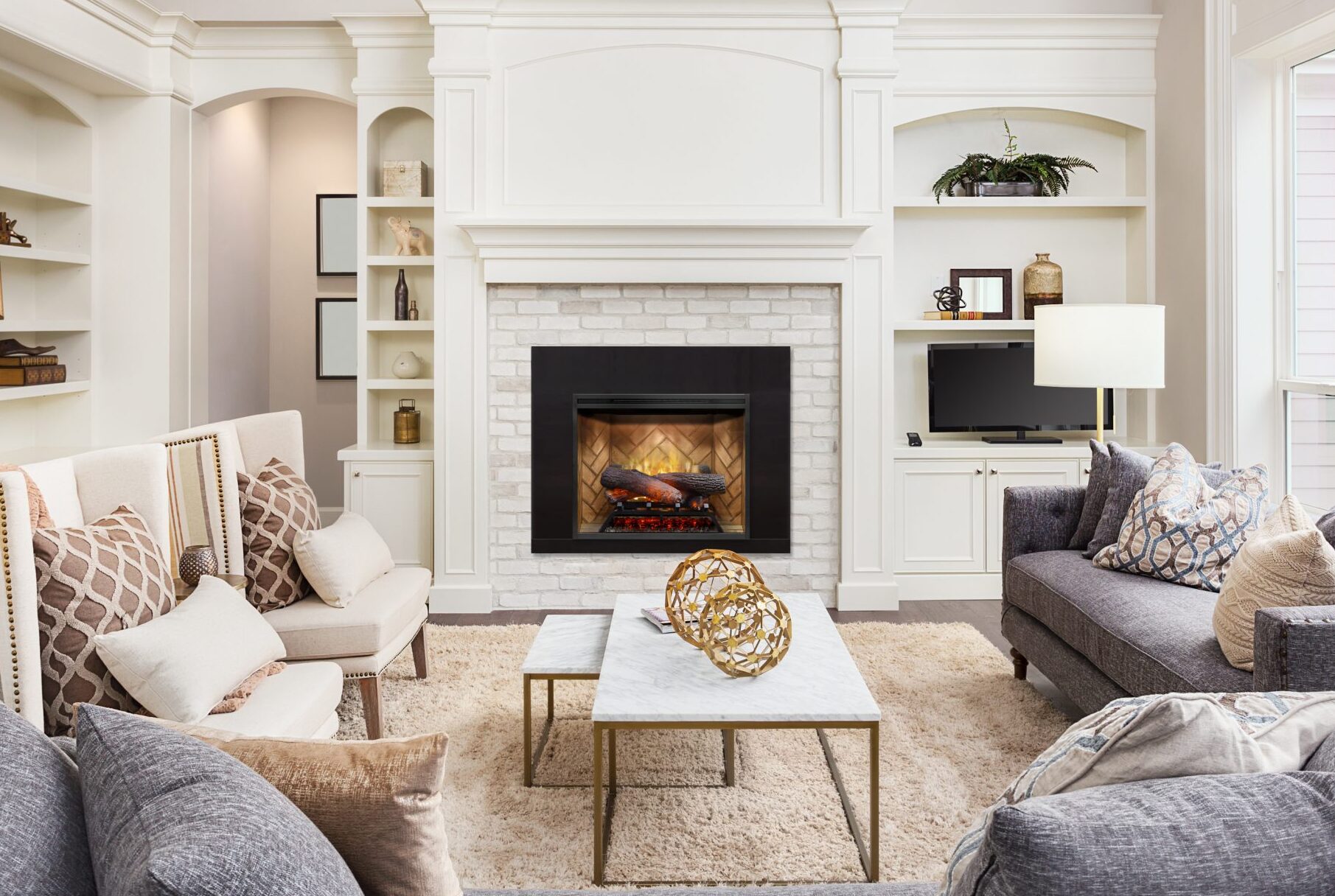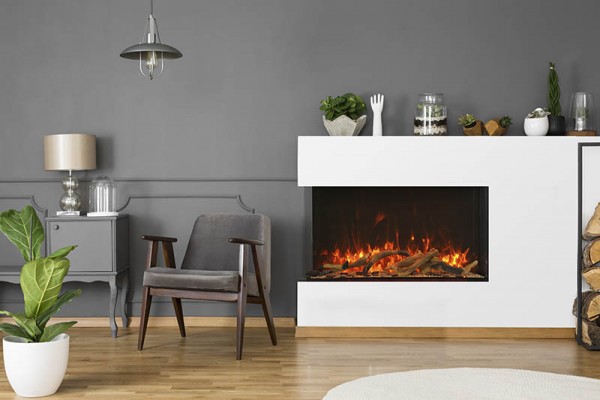As specialists in electric fireplaces, we answer a lot of questions about the electrical requirements for our fireplaces. There are a few basic concepts that are important to understand before installing an electric fireplace. The following overview is presented in layman’s terms and is not intended to be a technical course in electricity. Whenever you need any electrical work done, we recommend that you consult a licensed electrician.
120 vs 240: What’s the difference?
The current that runs throughout our homes in North America is 120 volts. When you plug something into a regular electrical socket in your home, you are connecting to 120 volts. All of our electric fireplaces will operate on 120 volts. A single 120 volt circuit will support a power draw of up to 1500 watts. When you purchase a blow dryer or space heater, you may notice the maximum wattage listed on the package; this tells you how powerful the heat output will be. So, a 1500 watt dryer will be more powerful than a 1000 watt dryer, etc. For an electric fireplace, 1500 watts translates to about 5000 BTUs of heat (British Thermal Units are a way of measuring the amount of heat being produced). This is enough heat to warm up an area of about 400-500 square feet.
Large appliances in your home, like an electric stove or a clothes dryer, will be connected to a special ‘heavy duty’ socket; these are 240 volts. As you would imagine, 240 volts offers more power, and can produce more heat, than a regular 120 volt connection. This means that your oven has more heat than a blow dryer to cook that turkey! Some electric fireplaces may also connect to 240 volts, by a direct-wire connection. This allows the fireplace to produce more heat, and these units will have a maximum draw of about 2500 watts. This will provide a maximum heat output of 8500 – 9000 BTUs, which will take the chill off an area up to about 800 square feet.
So, the bottom line is that if you need more heat, or you are heating up a larger space, you need an electric fireplace that can connect to 240 volts instead of 120 volts.

What is a dedicated line?
A dedicated line is an electrical line that connects directly to a circuit breaker (or fuse in an older home) on your electrical panel and has only one receptacle, or direct-wire connection. If you flip the circuit breaker off, only this one line would be affected.
A single outlet is not necessarily a dedicated line. In fact, most outlets in your home are one of a series of outlets that connect to each other on a single circuit. When you flip most of the breakers on your electrical panel, you will notice that multiple lights or outlets will turn off at one time. These are not dedicated circuits. Sometimes when we mention having the fireplace on a dedicated circuit, homeowners will tell us that they have an outlet just for the fireplace, with nothing else plugged in. Unless that outlet was specifically put in as a dedicated line, with no other outlets connected to the same breaker, it is NOT a dedicated circuit, or line. The quickest way to figure this out is to turn off the breaker that goes to your fireplace outlet; if other items also turn off at the same time, you do not have a dedicated line.
Why is a dedicated line important for an electric fireplace? With only the flames turned on, an electric fireplace will draw very little electricity, because all the lights are LED. If there were no heater on the fireplace, you wouldn’t need a dedicated circuit. However, as noted above, electric fireplaces have a maximum heat output of 1500 watts on a 120 volt line, or 2500 watts on a 240 volts line. This is all the power that the circuit can handle. If your heater is at the maximum setting, there is no power left on the circuit for any other items.
Plug-in or hard-wire?
Almost all of our electric fireplaces may be hard-wired. However, most do come with cords to allow the convenience of plugging into a regular household 120 volt receptacle. If a fireplace is designed to be connected to 240 volts, it must be hard-wired; if it comes with a cord, the cord must be removed when connecting to 240 volts. Some electric fireplaces that are dual-voltage, i.e. they may connect to either 120 volts or 240 volts, do not come with a cord, and are hard-wire-ready by default. However, an optional plug kit is usually available should you wish to plug-in to a regular 120 volt receptacle. Just remember to order this kit if you need it.
There are some electric fireplaces which MUST be hard-wired. These are units that cannot be removed from the wall once the wall construction is completed. Building codes require that any electrical receptacle must be accessible, and cannot be buried behind a wall. The majority of electric fireplaces slide into the wall opening from the front, after the wall is finished. These units may be plugged into a receptacle behind the wall, because the fireplace may later be removed should there be a fault with the receptacle at a later date. Those electric fireplaces which may not be removed from the wall after construction, may not be plugged into a receptacle behind the wall, because that receptacle would not be accessible once the fireplace wall is completed. Most of these units will come with a power cord for testing and demonstration purposes. However, this cord is meant to be removed at installation, and replaced with a hard-wire connection.

Heat or no heat?
Almost all electric fireplaces come with built-in heaters. It is the heaters that draw most of the power, when they are turned on. As mentioned above, without the heaters, electric fireplaces draw very little power because the flames are created with LED lights. If you find yourself in the position of wanting an electric fireplace, but not having the ability to connect to a dedicated circuit, you may opt to have the heater permanently disabled by a qualified technician.
If you prefer to use the heater as well as the flames, you need to ensure that the electrical circuit to which you want to connect the electric fireplace, has sufficient available wattage to allow the fireplace heater to operate. Most heaters have a low setting of around 750 watts on 120 volts, in addition to higher settings. If your circuit breaker turns off when you run the fireplace heater at the desired setting, you need to invest in a dedicated line, or stop using the heater. Fortunately, with an electric fireplace, you can operate the flames with or without the heater.
SHOP ELECTRIC FIREPLACES
Stylish Fireplaces knows that adding a fireplace to your home can be challenging. With an electric fireplace and their NFI Certified Hearth Design Specialists, it’s easy to create a space you’ll love to share with family and friends. Check out all the options and connect with their experts for help to find the perfect electric fireplace for you. You’ll live stylishly ever after.